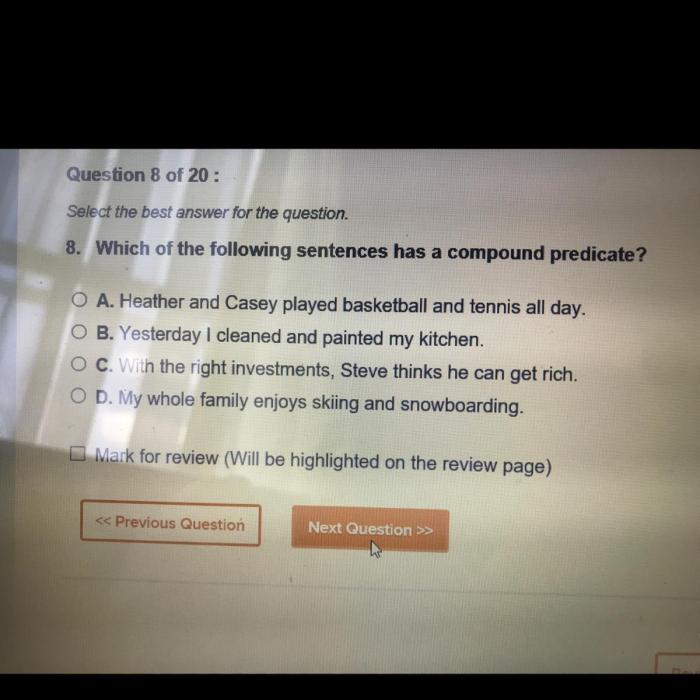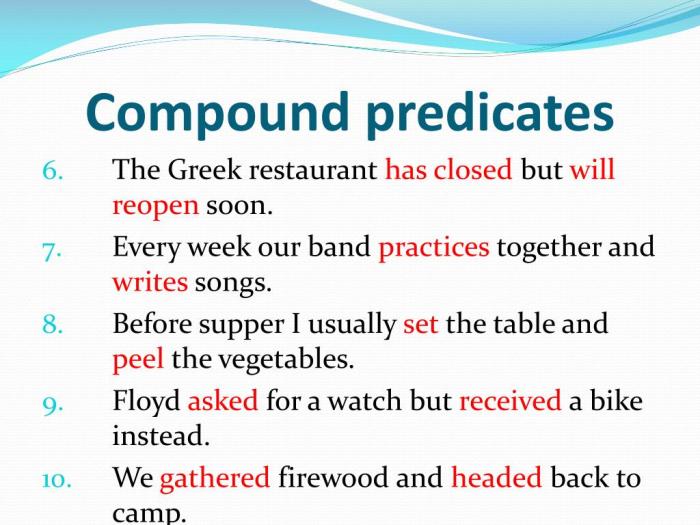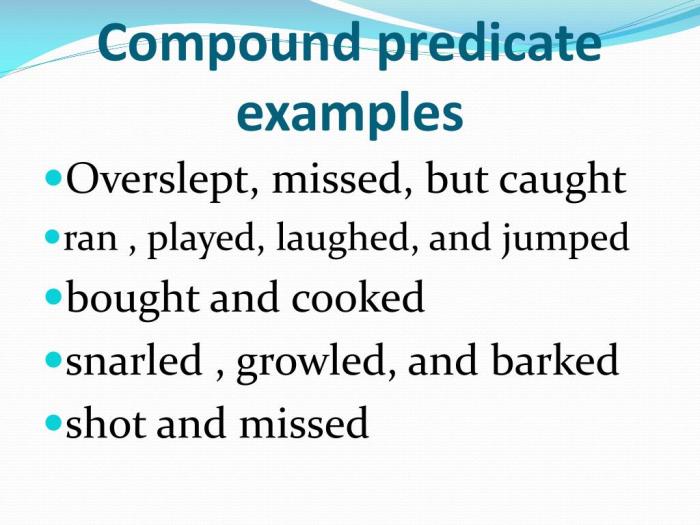Which of the following sentences has a compound predicate? This question delves into the realm of grammar, exploring the intricacies of sentence structure and the role of compound predicates in conveying meaning. Join us as we unravel the characteristics, identification techniques, and diverse applications of compound predicates, embarking on a journey that will enhance your understanding of sentence construction.
In this comprehensive guide, we will dissect the concept of compound predicates, providing clear examples and practical tips for recognizing them in various contexts. Through engaging discussions and thought-provoking examples, we aim to illuminate the nuances of compound predicates, empowering you to wield this grammatical tool with precision and confidence.
Compound Predicates: Which Of The Following Sentences Has A Compound Predicate

Compound predicates are a type of predicate that consists of two or more verbs that are joined by a coordinating conjunction, such as “and,” “or,” or “but.” These verbs work together to express a complete thought or action.Compound predicates are used to connect related actions or events that occur in sequence or are considered equivalent.
They can also be used to contrast or compare different actions or events.
Identifying Compound Predicates, Which of the following sentences has a compound predicate
Compound predicates can be identified by their structure and the presence of a coordinating conjunction. The verbs in a compound predicate are typically in the same tense and have the same subject. The coordinating conjunction joins the verbs and indicates the relationship between them.
Examples of Compound Predicates
| Sentence | Subject | Verb | Predicate |
|---|---|---|---|
| The students studied for the test and passed with flying colors. | students | studied, passed | studied for the test and passed with flying colors |
| The wind howled and the rain poured. | wind | howled | howled and the rain poured |
| She smiled but said nothing. | she | smiled, said | smiled but said nothing |
Distinguishing Compound Predicates from Other Structures
Compound predicates can be distinguished from other sentence structures, such as complex predicates, by their structure and the relationship between the verbs. Complex predicates contain a main verb and a subordinate clause, while compound predicates contain two or more main verbs joined by a coordinating conjunction.
Compound Predicates in Different Contexts
Compound predicates are used in various types of writing, including fiction, non-fiction, and academic writing. They can be used to create a variety of sentence structures and to express a range of meanings. Compound predicates can help to add variety and interest to writing and can be used to emphasize certain actions or events.
Q&A
What is a compound predicate?
A compound predicate is a sentence structure that contains two or more verbs joined by a coordinating conjunction (such as and, or, but, nor, for, so, yet) and working together to convey a complete thought.
How can I identify a compound predicate?
Look for sentences with multiple verbs connected by coordinating conjunctions. Each verb should have its own subject and contribute to the overall meaning of the sentence.
What are some examples of compound predicates?
The dog barked and wagged its tail. / The students studied hard and passed the exam. / The rain fell heavily, flooding the streets.

